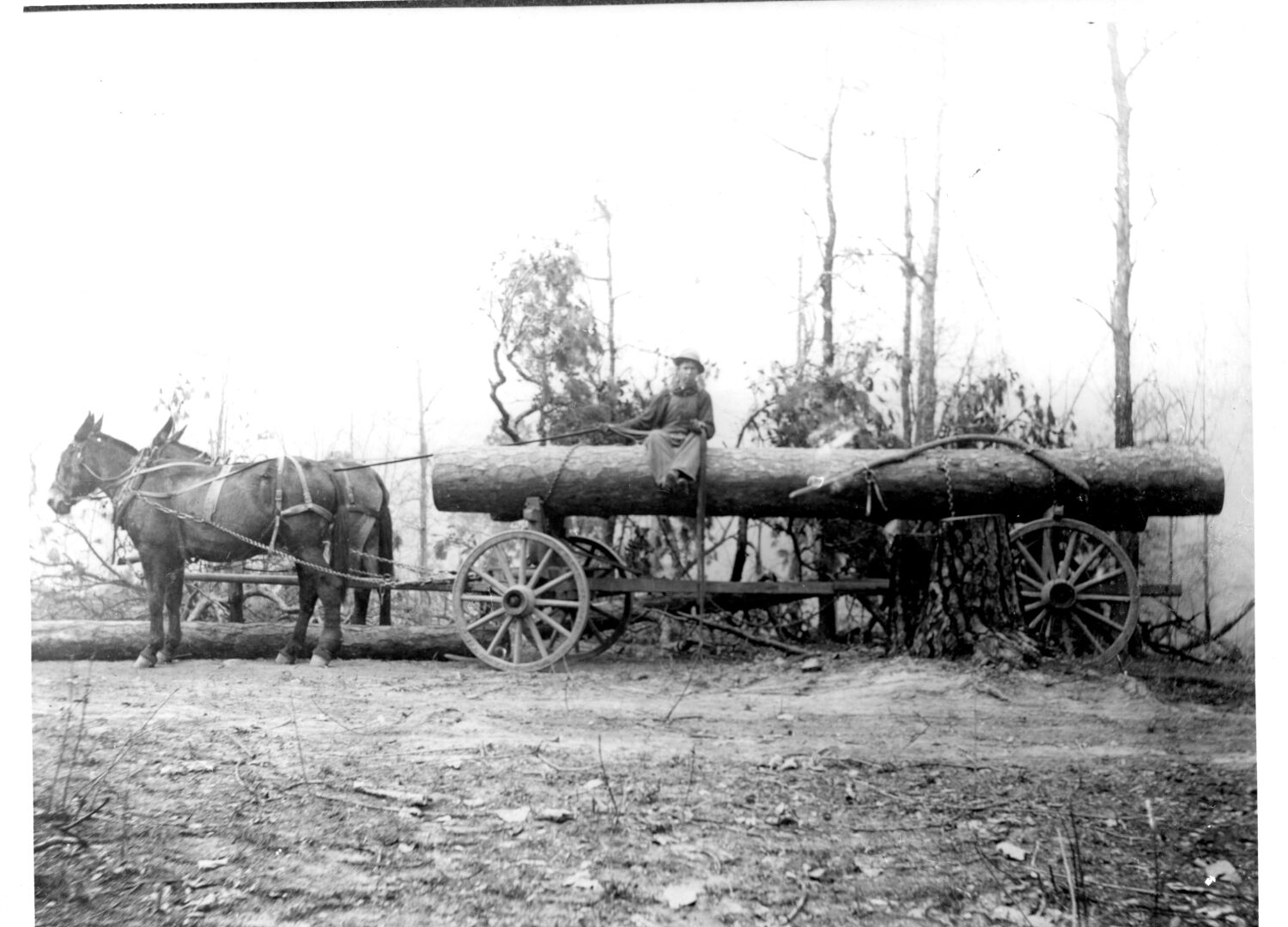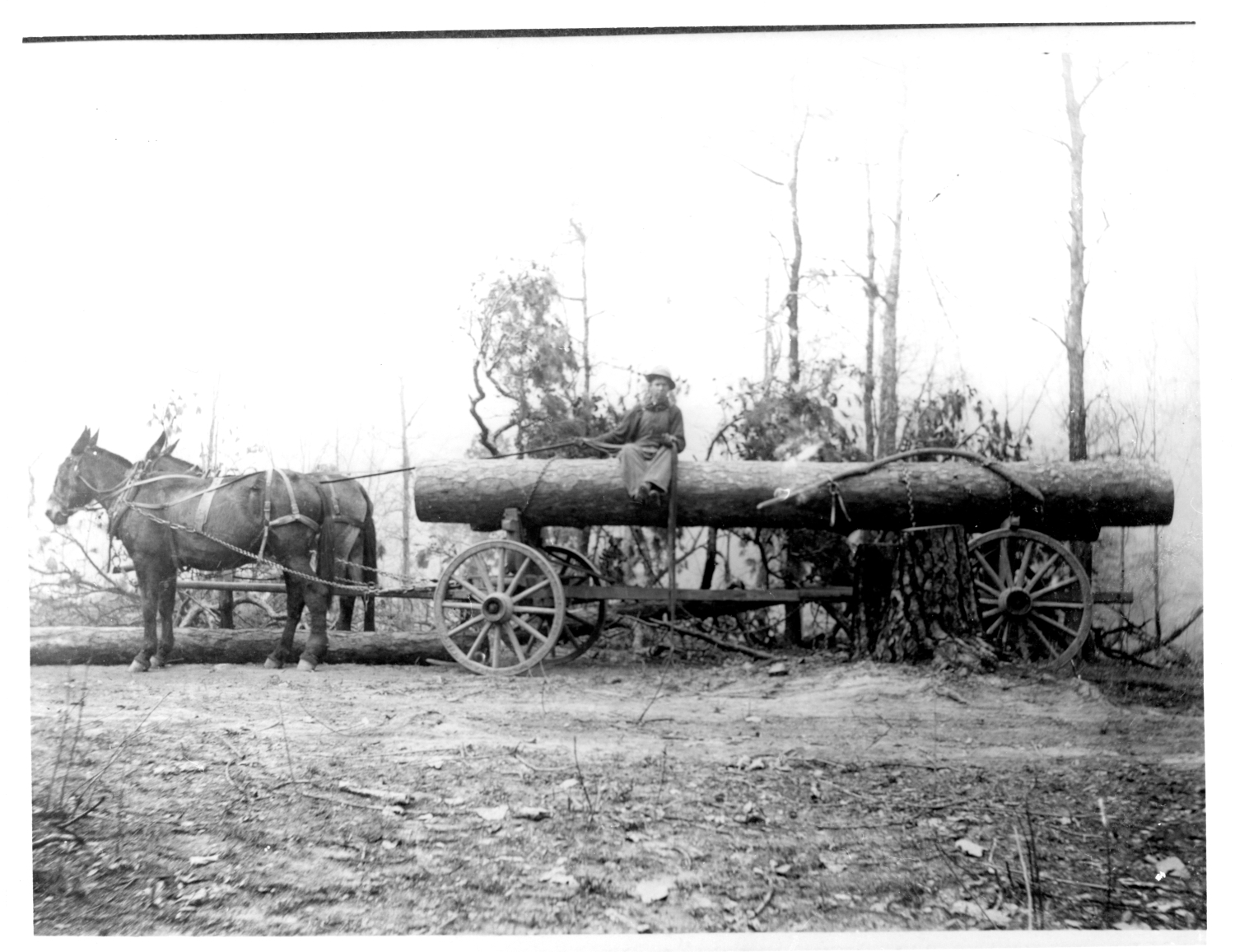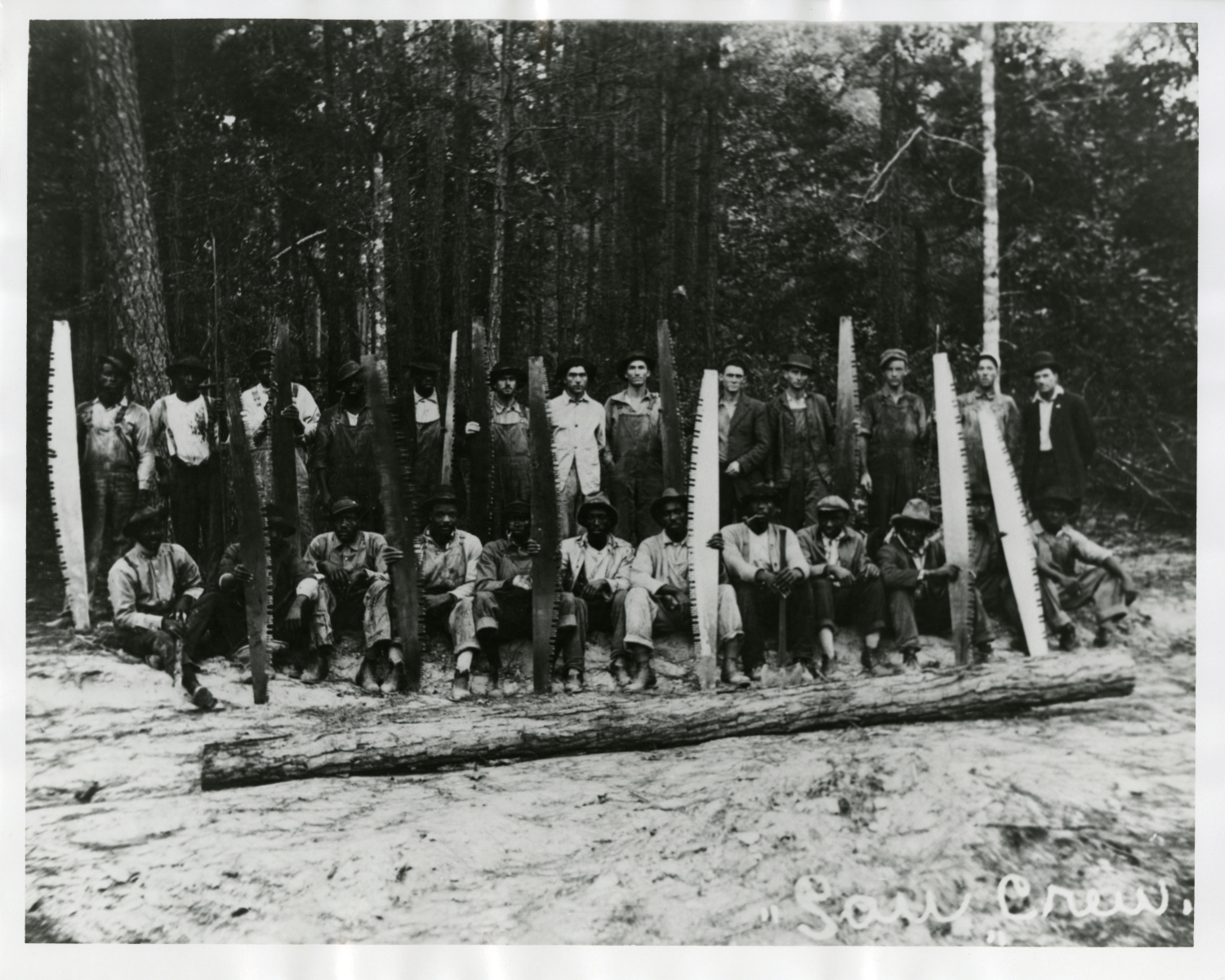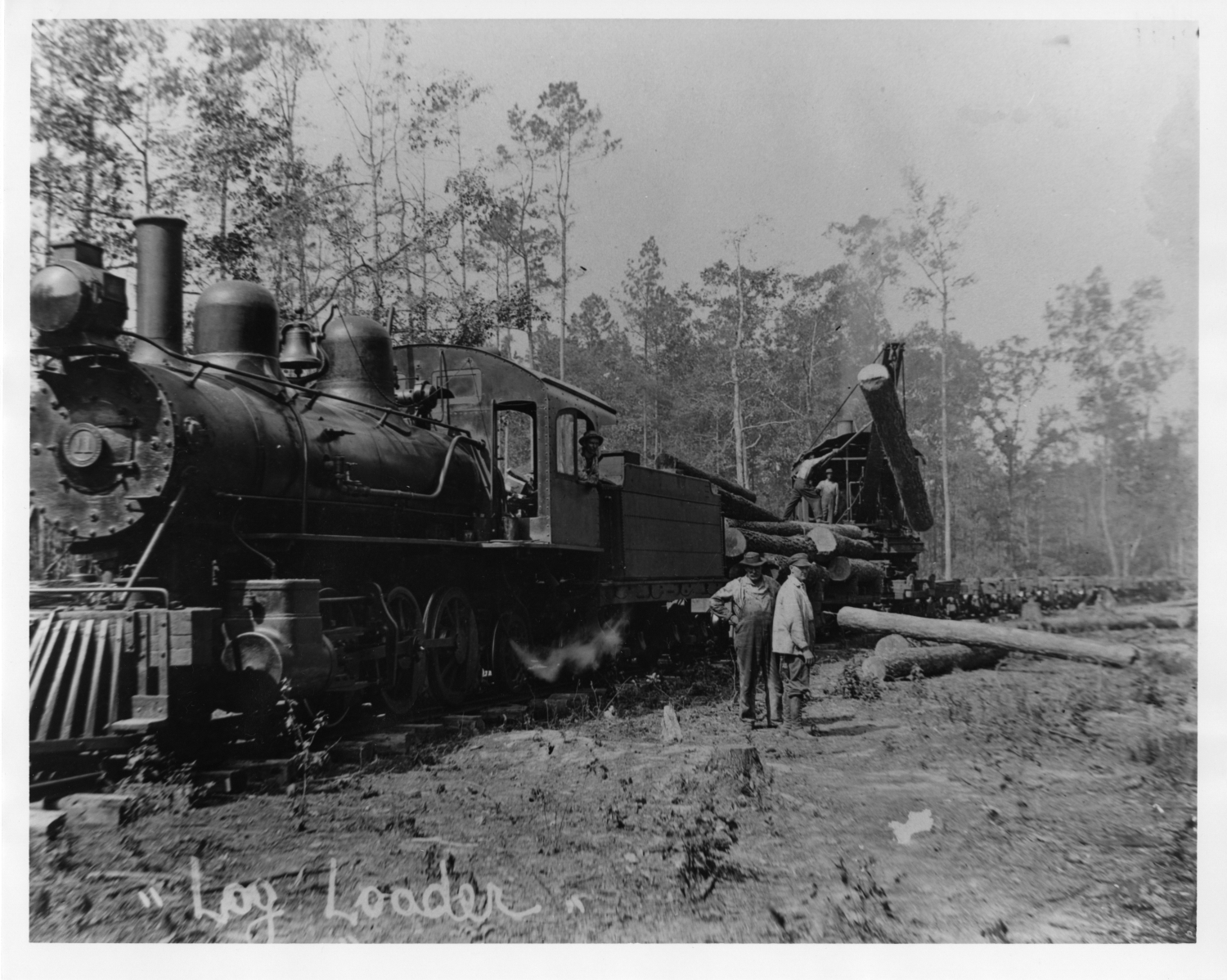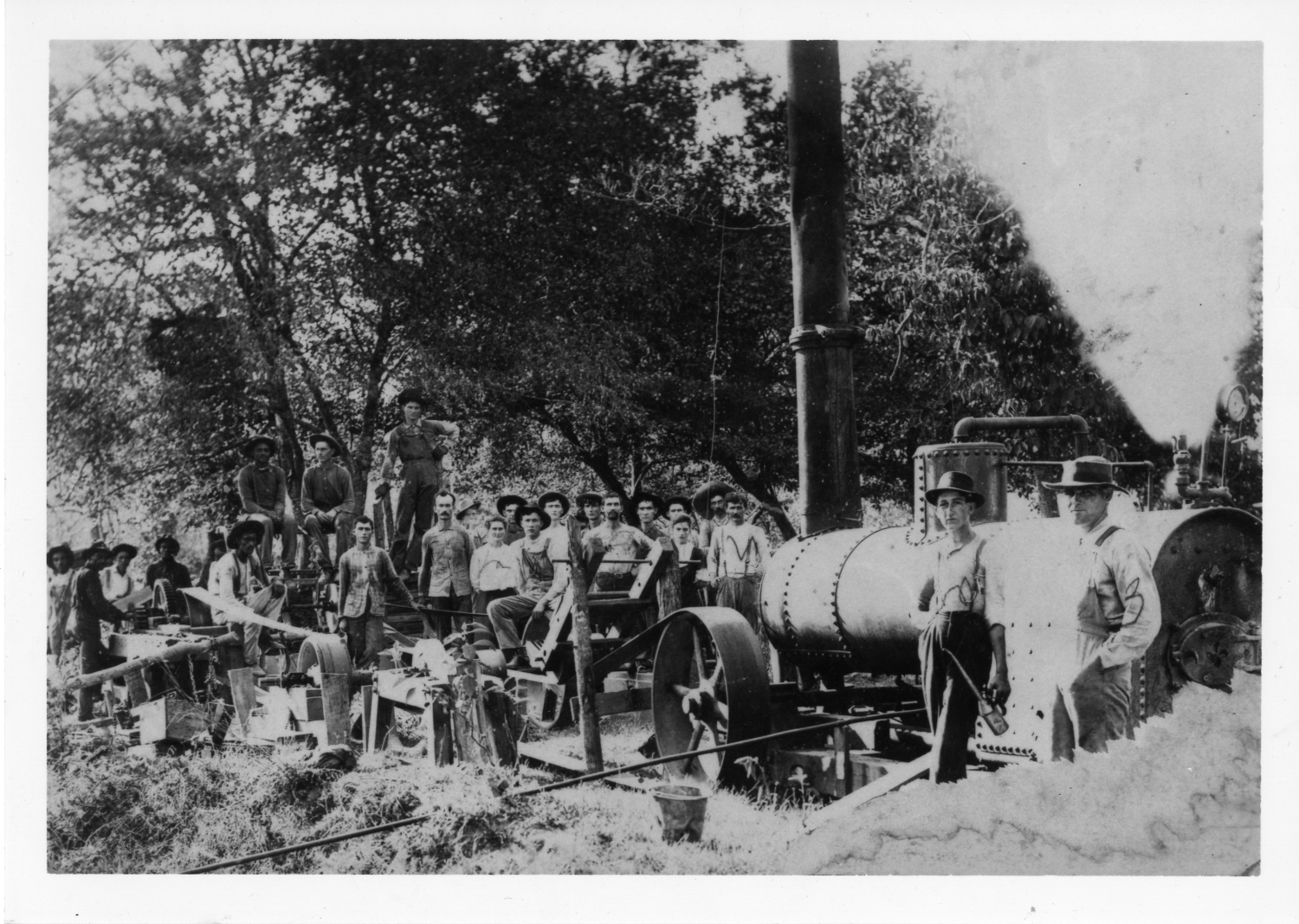Introduction
In this activity, you will look at seven black and white photos that show the wood industry in Arkansas in the early 1900s (early 20th century). Wood is a very important natural resource. In the past, it was the most popular building material, and it was used for fuel. Today, wood is still used to build new buildings, make furniture, and even to make toys and toothpicks.
The large and rich forests of Arkansas made the wood industry one of the most important industries of the state in the past. Photos used in this activity will help us understand how over one hundred years ago trees were cut down, transported, and transformed into lumber. We will explore which parts of this process were done by people, which by machines, and how animals worked too.
Activity Questions
Before you look at the photos, look around you. Can you see anything made of wood (for example, a piece of furniture, floor, window frame, toy)? Think of how what you see was made. How did it become what it is starting with a tree that once grew in a forest?
Man hauling log to Petit Jean sawmill
- What can you see in Photo 1 and Photo 2?
- Who are the people in the two photos? What are they doing? What is their job?
- What animals can we see in the two photos? What are the animals doing?
- Before these photos were taken trees had to be cut down. Who do you think cut down the trees? How were the trees cut down?
- Are the logs on the carts in these two photos the same type and the same size?
- How do you think the big logs and the smaller logs were loaded onto the carts?
Group of workers posing with saws
- Who are the people in Photo 3 and Photo 4? What are they doing in the photos? What is their job?
- Describe the men in the photos. Do they all look the same? What are they wearing?
- What tool are some of the men in the photos holding in their hands? For what did the men use this tool?
- Do you see any machines in the two photos that helped the men in their jobs?
- Do you think that it was easy or difficult for the men in the two photos to do their job?
Logs being loaded on to train cars in Ashley County
- What is happening in Photo 5 and in Photo 6? Describe the two photos.
- What are the machines in the photos? Note that we can see at least two different machines in Photo 5. Read what it says in the left lower corner of Photo 5 for more information.
- Did the machines that we see in the two photos make the wood industry workers’ jobs easier or more difficult?
- What can we see in Photo 7? Read the photo caption for more information.
- What is a sawmill? What kind of work is usually done at a sawmill?
- What is the machine in the photo? For what was it used? Do you think that the machine-made the work of the people in the photo easier or more difficult?
- Are there any sawmills in Arkansas today? If you are not sure, research sawmills in Arkansas. Are sawmills still important to the Arkansas economy?
- Look at all the seven photos again. They were all taken around the same time. They all show a process of making wood out of trees. Describe what this process was like in Arkansas over one hundred years ago. What tools and machines were used in this process? What work was done by people and what work was done by machines? How were animals used in this process?
Primary Sources
To learn more about the primary sources featured in the activities above, click the following links:
- Man hauling log to Petit Jean sawmill
- Two men driving flatbed of lumber hauled by mules in Ashley County
- Group of workers posing with saws
- Group portrait of unidentified saw crew in Ashley County
- Train hauling flat cars of logs in Ashley County
- Steam-powered sawmill operation in southwest Arkansas
- Train at railroad station with passengers and workers onboard, Hot Springs
Arkansas Social Studies Standards
Social Studies (History)
Strand: History
Content Standard 12: Chronology, Change Over Time, and Contextualization – Students will analyze chronology, patterns of continuity and change over time, and contextualization of historical events.
- Grade 1 (Change Over Time): H.12.1.3 Compare present-day families, objects, and events with those in the past using visual representations, news stories, and artifacts (e.g. daily life tasks, food, clothing, transportation, communication, recreation)
- Grade 2 (Change Over Time): H.12.2.3 Compare life in your community past and present using maps, photographs, news stories, artifacts, or interviews (e.g. transportation, communication, recreation, jobs, housing)
- Grade 2 (Contextualization): H.12.2.4 Investigate ways individuals, groups, and events have shaped one’s community and other communities in the United States
- Grade 3 (Change Over Time): H.12.3.3 Compare specific regions of Arkansas in the past with those regions today noting changes over time (e.g., transportation, jobs, urban growth, population density, natural resources, communication)
- Grade 3 (Contextualization): H.12.3.4 Analyze individuals, groups, and events to understand why their contributions are important to historical change and/or continuity
- Grade 4 (Contextualization): H.12.4.4 Analyze the impact of individuals and events on the past, present, and future
Key Terms
More Information
N/A
Downloadable Guides and Handouts
We encourage K-12 educators to use History Alive: Virtually! in a way that will best match their classroom needs. The “Exercise” handout includes a complete exercise as featured on this website, the “Primary Sources” handout includes only primary sources used in the exercise, and the “Questions” handout includes analytical questions from the exercise but is editable and can be easily changed to best match students’ needs.
From Trees to Lumber – Exercises

